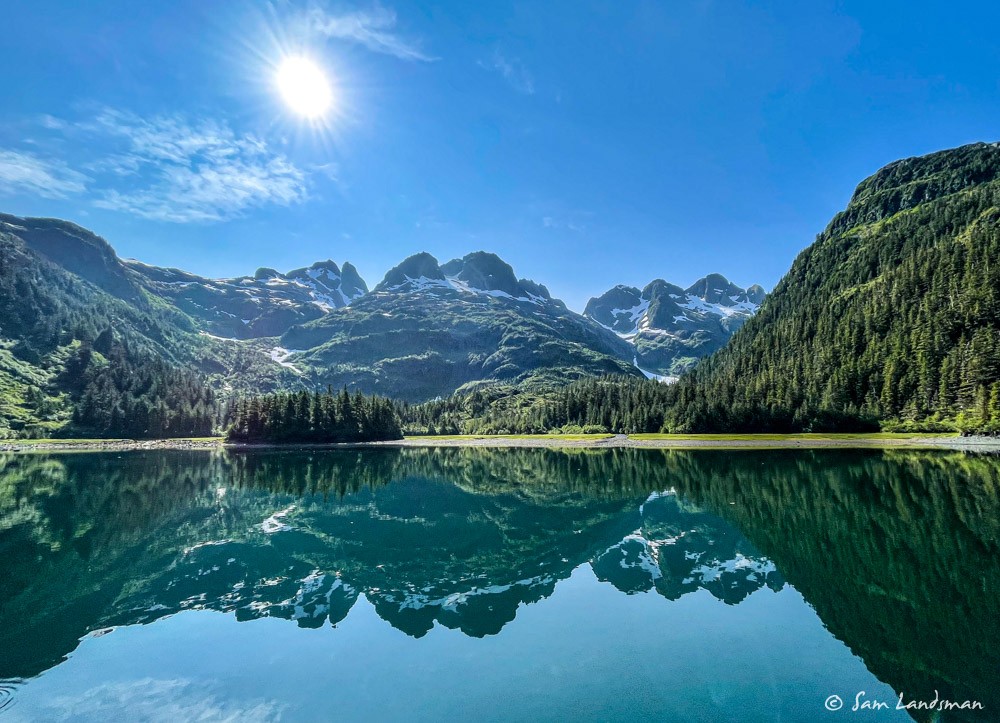Prince William Sound, Alaska, offers an unforgettable cruising experience, and my first encounter left me captivated. Arriving on a serene, sun-drenched day, we anchored in the breathtaking Barnes Cove in Drier Bay. This initial impression has fueled my enthusiasm for exploring this remarkable region.
Navigating a new cruising area presents unique challenges. Unlike the linear channels of the Inside Passage, Prince William Sound is a semi-circular expanse dotted with islands, inlets, and fjords—akin to a colossal Glacier Bay. The primary question arises: “Where to begin?” With limited time, possibly just a few weeks, efficient planning is essential.
The most invaluable resource I’ve discovered is “A Cruising Guide to Prince William Sound” by Jim and Nancy Lethcoe. It’s more than just a guide; it’s a comprehensive companion filled with historical context (from geological formations to the Exxon Valdez disaster), detailed diagrams, and insightful descriptions. What sets it apart is the inclusion of information on hiking trails and dinghy exploration, a significant advantage over many other cruising guides.
While cruising guides provide essential anchorage specifics, they often lack the evocative power to highlight the truly exceptional spots. For that, local insights are invaluable. I found online resources exceptionally helpful: Tony Fleming’s videos, James and Jennifer Hamilton’s Dirona blog, and Peter Hayden’s Tanglewood blog. Their experiences painted a vivid picture of must-see destinations. Personal recommendations from friends were also incredibly beneficial.
Barnes Cove was our introduction to this paradise. After a smooth 350nm journey from Lituya Bay, we were eager to explore. The perfect blend of weather, scenery, camaraderie, and wildlife, coupled with the flawless performance of our boat, created an overwhelmingly positive first impression.
During a warm afternoon, we explored Drier Bay by dinghy and stumbled upon intriguing cannery ruins.
Following this, we experienced our first “knoll walk” in Barnes Cove. Unlike the dense, often impenetrable forests of Southeast Alaska, Prince William Sound features pockets of open, un-forested areas along the shoreline. These “knolls” appear flat from a distance but are surprisingly diverse up close. The thick, water-saturated moss creates a spongy walking surface. The varied topography, with creeks, ponds, and natural viewpoints, offers endless exploration opportunities. Locals cherish these areas for hiking, hunting, and even backcountry skiing in the spring.
The allure of Prince William Sound’s wilderness is undeniable. Hiking opportunities abound, inviting further exploration.
The positive impressions continued the next day. Despite warnings about the slow recovery of orca populations following the Exxon Valdez disaster, we encountered a small pod of orcas. We paused to observe as they approached, disappeared briefly, and resurfaced on the opposite side of our boat.
The favorable weather persisted, with sunny skies, light winds, and temperatures in the mid-70s. Based on a recommendation, we headed to Deep Water Bay, known for its sandy beach. Despite the somewhat challenging anchorage (deep and steep-to) and the presence of numerous local boats, we secured a good position and enjoyed a day at the beach.
Deep Water Bay proved to be a delightful stop. We connected with locals, toured the Wyrill (a 62-foot wooden powerboat built in 1931), enjoyed refreshments, swam in the Alaskan waters, and relaxed on the beach. It truly felt like a vacation.
With our beach day behind us, we set our sights on Blackstone Glacier. We chose a picturesque anchorage along the south shore of Blackstone Bay, just outside the glacier’s southern terminal moraine.
Exploring the bar at low tide revealed a stunning landscape: white and gray peaks contrasted against a bright blue sky and vibrant green moss, grass, and trees.
The seemingly simple green landscape transformed into a complex tapestry of marshlands and saltwater-inundated forests.
We continued our exploration by dinghy. Blackstone Glacier, with its two snouts reaching the bay, was easily accessible. Approaching the glacier by dinghy offered a raw and immersive experience. The wind felt more intense, the waves more menacing, and the calving more dramatic. Navigating among the ice, touching the rocky shoreline, and feeling the mist from waterfalls created an unforgettable experience.
The surprising amount of traffic at Blackstone Glacier included jet skiers, kayak groups, and large tour boats. Its proximity to Whittier, and then Anchorage, makes it a popular destination for tour groups.
Instead of heading straight back to Akeeva, we took a longer route around Willard Island, stopping to explore potential hiking trails.
However, our plans were interrupted by a brown bear sighting across the lagoon. We opted to return to the dinghy rather than risk an encounter.
Our second attempt yielded similar results. We decided to enjoy the upper deck, a safer and more relaxing way to spend our last night with our guests.
The next morning, we made the short trip to Whittier to say goodbye to our guests.
Whittier, with its small population and limited amenities, serves primarily as a transportation hub. Unlike many Southeast Alaskan communities, it’s connected to Anchorage by road. Moorage for larger boats is restricted, but several anchorages are located within a few hours of town.
Our route for the first few days in Prince William Sound proved rewarding.
In conclusion, Prince William Sound is worth the effort to reach. The density of stunning anchorages rivals the best I’ve seen, and the relatively low number of cruising boats enhances the experience. The hiking opportunities are exceptional. Consulting “A Cruising Guide to Prince William Sound” by Jim and Nancy Lethcoe is a great first step in planning your trip.
Next up: Cordova, Columbia Glacier, Valdez, and a tsunami evacuation.


